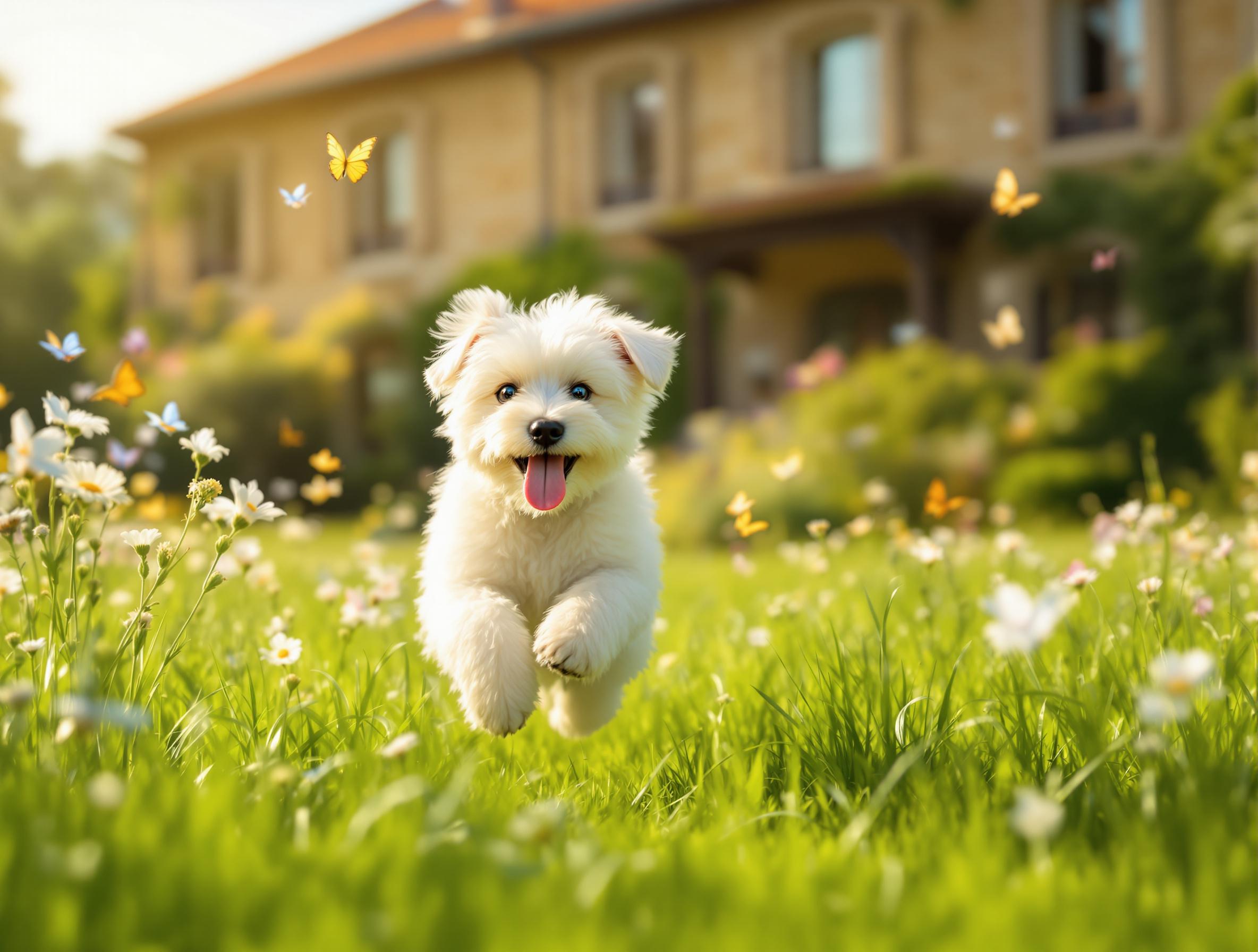There’s something magical about the way a Maltese dog walks, with its head held high and its silky coat flowing like a cloud. Those who encounter this small dog with deep, expressive eyes immediately sense that behind the aristocratic appearance lies an extraordinarily affectionate heart.
The story of the Maltese dog is as ancient as it is fascinating, a journey that leads from the shores of the Mediterranean to royal European courts, and today, into our homes as a loyal companion.
A Story as Old as the Sea
Although the name "Maltese" immediately brings to mind the island of Malta, the roots of this breed spread throughout the Mediterranean basin. Aristotle, in the 4th century BC, already spoke of a small, agile, and well-proportioned companion dog originating from the "megalithic" islands. Some scholars believe that the Maltese dog descends from ancient companion dogs raised in coastal cities like Syracuse and Alexandria, where the beauty of animals was highly prized.
Traveling on merchant ships of the Phoenicians and Romans, the early ancestors of the Maltese dog spread across coasts and courts, winning hearts wherever they went. Ancient mosaics and sculptures often depict small dogs resembling today’s Maltese, usually portrayed close to noblewomen or young aristocrats.
During the Renaissance, the Maltese dog became a symbol of status and refinement across Europe. In the courts of France, England, and Spain, these proud, affectionate little dogs were treasured by royalty. It’s said that Mary Stuart carried her beloved Maltese even during her imprisonment, and the loyal little dog stayed by her side until the very end.
Caring for a Little Treasure
Today, the Maltese dog still carries that timeless aura of grace, but living with one requires commitment and care. Its snow-white coat isn’t just a visual delight—it’s a daily responsibility.
Coat care is the biggest commitment. Without daily gentle brushing, the hair quickly tangles and mats, often requiring professional grooming. A bath every two to three weeks keeps the coat bright and healthy, but it’s essential to use gentle products suited for sensitive skin.
Diet is equally important. High-quality, protein-rich food specifically formulated for small breeds helps maintain their energy and beautiful coat.
Despite their small size, Maltese dogs are lively and energetic. They love walks, exploration, and playful interactions. They are not content being lap dogs alone; their keen, curious minds need stimulation every day.
As for health, the Maltese dog is generally robust but can be prone to issues like excessive tear staining, dental problems (early tartar buildup), and some joint sensitivity with age. Regular veterinary checkups and consistent dental hygiene are crucial.
Living with a Maltese: Love and Small Challenges
Choosing a Maltese dog means welcoming into your life a creature whose emotional intensity matches its delicate looks.
Deeply affectionate, the Maltese tends to form strong attachments to its favorite person. This loyalty makes it an extraordinary companion but also means it can suffer from separation anxiety if left alone for long periods.
Despite being intelligent and highly trainable, the Maltese dog can sometimes display a streak of stubbornness, particularly if overly pampered. A gentle but firm approach to training, combined with consistency and respect, is essential for a harmonious relationship.
The Maltese Dog and Children: A Bond to Cultivate Carefully
Many wonder if the Maltese dog is suitable for households with children. The answer is yes—with a few precautions.
With its natural gentleness and desire for interaction, the Maltese dog loves spending time with children. It can be a caring companion, sharing quiet games and creating unforgettable moments of tenderness.
However, one must remember that this is a very small and physically delicate dog. Overly exuberant or rough play can stress or even harm it. It’s crucial to teach children to respect their little companion: no pulling, no noisy chases—only gentle caresses and shared moments.
With proper education on both sides, the Maltese dog becomes a true furry sibling, enriching children's upbringing with love, empathy, and joy.
Strengths and (Small) Weaknesses
Falling in love with a Maltese dog is easy. Its loving nature, ability to sense its owner’s emotions, and daily joy make it an irreplaceable companion.
Among its strengths:
-
Intelligence: Learns quickly, even complex tricks.
-
Unwavering loyalty: An ever-faithful friend.
-
Adaptability: Perfect even for apartment living.
-
Hypoallergenic coat: Sheds very little hair, ideal for mild allergy sufferers.
However, it’s fair to acknowledge a few small challenges:
-
High grooming needs: A Maltese requires daily coat care.
-
Sensitive to loneliness: Loves company and a stable routine.
-
Potential stubbornness: Especially if spoiled too much.
A True Companion, Not a Mere Ornament
Choosing a Maltese dog means embracing a living being of deep feelings and lively intelligence.
This breed is not just a "beautiful show dog" but a small heart brimming with love.
Those who can dedicate time, attention, and respect will discover that behind the snowy coat and soulful eyes lies a friend capable of unconditional, lifelong love.








Leave a Comment